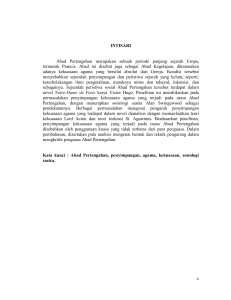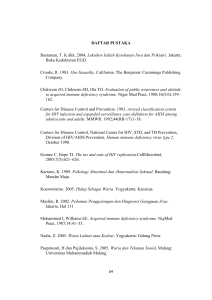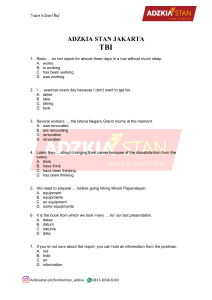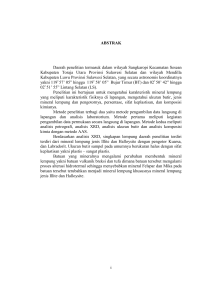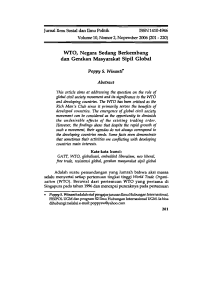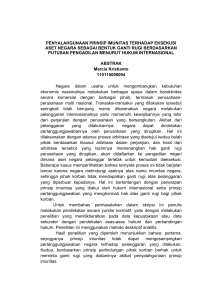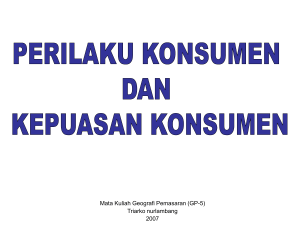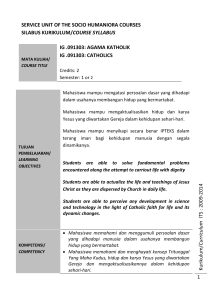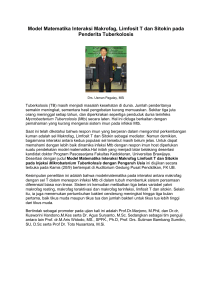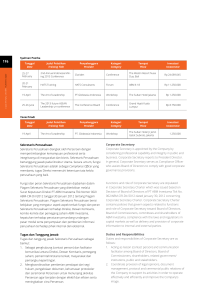KONSTITUSIONALISME DAN KONSTITUSI
advertisement
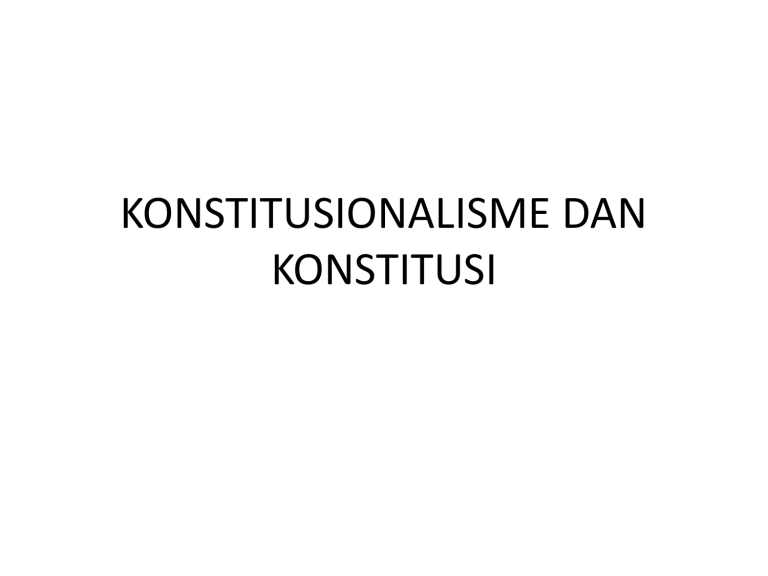
KONSTITUSIONALISME DAN KONSTITUSI CONSTITUTIONALISM (Paul Craig) • Can be used to refer to the philosophical issues that surround the existence of constitution. Why constitution is legitimate, why it is authoritative and how it should be interpreted? • Descriptive. Which a particular legal system does or does not possess the features associated with a constitution. • Juridical shift 1945. State institutions are established by and derive their authority from written constitution. The constitution assign ultimate power to the people by wy of elections. Power is only lawful if it conforms with percepts of the constitution. Those will be policed by a special constitutional court. • Public Law. It is used to cannote not wheter a legal system has the features of the constitution, but also the axtent to which it satisfies desirable precepts of good governance. Accountability of government and human rights. KONSTITUSIONALISME • PAHAM ATAU KEPERCAYAAN • YANG MENJADI SPIRIT BERNEGARA • YANG MENENTUKAN KARAKTERISTIK PENYELENGGARAAN NEGARA C.F. Strong: Konstitusionalisme Yunani Kuno negara kota, direct democracy. Konstitusionalisme Romawi monarchi, republic, aristocracy. Konstitusionalisme Abad Pertengahan feudalisme, imperium. Konstitusionalisme Renaissance enlightened despotism. Konstitusionalisme Modern national, democratic. KONSTITUSIONALISME MODERN • PEMBATASAN KEKUASAAN • NASIONAL • DEMOKRATIS AKAR SEJARAH • YUNANI KUNO: Pembatasan dalam bentuk pemikiran tujuan negara dan pilihan bentuk pemerintahan Tujuan negara: “not merely to make life possible but to make life good”. Aristoteles Polity, a type of middle class gov. Plato Aristocracy of political intellect. AKAR SEJARAH • ROMAWI: Dokumen hukum dan pembentukan lembaga perwakilan Tahun 500 SM muncul elemen demokrasi sebagai akhir pertarungan antara Patricians dan Plebesians (Senate and Tribunes). Kodifikasi Hukum Romawi the supreme legislative authority still rested with the Roman people. AKAR SEJARAH • PERTENGAHAN: Nasionalisme Pecahnya imperium romawi. Munculnya kekuasaan gereja, tetapi terdapat tuntutan nasionalisme. Joan of Arc France for the French. Penyatuan Aragon dan Castile menjadi kerajaan Spanyol. AKAR SEJARAH • RENAISSANCE: Nasionalisme, parlemen, pemisahan kekuasaan. • ABAD 18: Nasionalisme AKAR SEJARAH • ABAD 19: • Nasionalisme Konstitusi sebagai dokumen pembentukan negara baru. • Demokrasi perwakilan. • Supremasi konstitusi. • Jaminan Hak Asasi Manusia • Pemisahan Kekuasaan. KONSTITUSIONALISME MODERN CJ Bax dan van der Tang: 1. A state must be founded upon law. Power exercised within state should conform to definite legal rules and procedures. 2. Institutional structure of gov. Should ensure that power resides with, or is divided among, different branches which mutually control their exercise power and which are obliged to co-operate. 3. The relationship between the government and the individual members of society should be regulated in such manner that it leaves the latter’s basic rights and freedoms unimpaired. KONSTITUSIONALISME MODERN • By creating basic principles of justice and individual rights policed by court who independent of government. • By splitting up power between different government bodies to ensure that no one person has too much power. • By adopting representative institutions of government that chosen and can be remove by the people. • By providing for direct participation by the people in the process of government decision-making.
